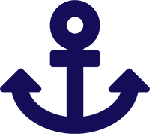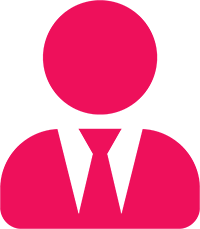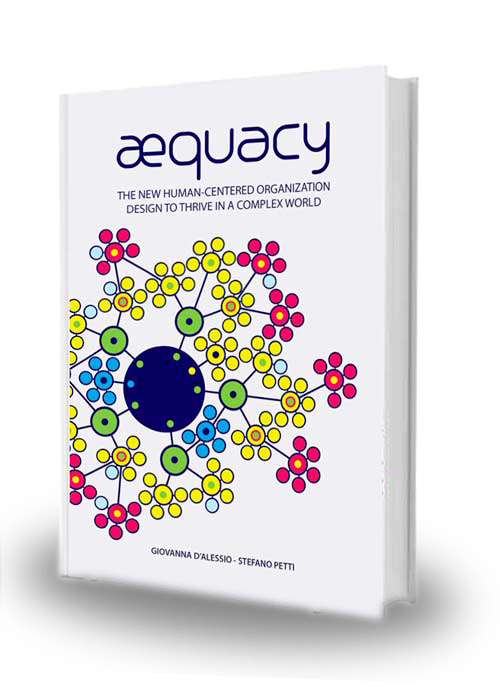Holacracy vs AEquacy
Holacracy vs AEquacy

We are often asked if AEquacy is similar to Holacracy. There’s a natural tendency to relate systems that are based on the same concept of self-management. But there are profound differences between AEquacy and Holacracy. We would like to list a few of them with the disclaimer that we may be partial, considering that as authors of AEquacy we are not equidistant.
 Underlying paradigm
Underlying paradigm
Holacracy was created by a software developer and business owner and the paradigm underlying his system can be easily described as “the organization as a computer”: all is made procedural to maintain order and efficiency in the system; people are “role-filler” and personal opinions and emotions shall be kept out of the conversations.
AEquacy was developed by organizational change experts and the paradigm underlying the design is “the organization as a living system”: there are a few building blocks in the AEquacy framework and participants of the system coach each other to reach team/organizational effectiveness. People are considered in their wholeness, emotions and opinions included.


Underlying paradigm
Holacracy was created by a software developer and business owner and the paradigm underlying his system can be easily described as “the organization as a computer”: all is made procedural to maintain order and efficiency in the system; people are “role-filler” and personal opinions and emotions shall be kept out of the conversations.
AEquacy was developed by organizational change experts and the paradigm underlying the design is “the organization as a living system”: there are a few building blocks in the AEquacy framework and participants of the system coach each other to reach team/organizational effectiveness. People are considered in their wholeness, emotions and opinions included.

Subordination vs. equality 
In Holacracy, subordination survives: super-circles (teams of higher order) and Lead links, as their name imply, have more power over respectively sub-circles (teams of lower order) and fellow circle-members. In fact, super-circles have authority over sub-circles and define the sub-circles objectives and metrics. The Lead-link is responsible for assigning people to Roles, for allocating resources and for defining Priorities, Strategies, and Metrics within the Circle.
In AEquacy all relationships are based on equality: teams are assigned a purpose but then the organization trusts that the team can be autonomous in determining the objectives and metrics that will bring the team closer to its purpose. There is no team that has more importance or more power than another. Coordination is assured by Coordination teams whose members are simply representatives of the teams coordinated and they are all peers.

Subordination vs. equality
In Holacracy, subordination survives: super-circles (teams of higher order) and Lead links, as their name imply, have more power over respectively sub-circles (teams of lower order) and fellow circle-members. In fact, super-circles have authority over sub-circles and define the sub-circles objectives and metrics. The Lead-link is responsible for assigning people to Roles, for allocating resources and for defining Priorities, Strategies, and Metrics within the Circle.
In AEquacy all relationships are based on equality: teams are assigned a purpose but then the organization trusts that the team can be autonomous in determining the objectives and metrics that will bring the team closer to its purpose. There is no team that has more importance or more power than another. Coordination is assured by Coordination teams whose members are simply representatives of the teams coordinated and they are all peers.
 Implementation
Implementation
In Holacracy, the implementation is top-down (in the words of Brian Robertson: “The existing seat of power signs the Holacracy constitution and from then on, the company moves to the Holacracy’s rules of the game”) and doesn’t take into account any change-management process.
In AEquacy, the implementation is bottom-up (with the sponsorship of the management) and we recommend that all employees (or a vast representation of them) are involved in the decision to adopt the new system and in the design of the new organization. AEquacy comes with a change management process for smooth adoption, based on the +15-year experience of the founders in organizational and culture transformation.


Implementation
In Holacracy, the implementation is top-down (in the words of Brian Robertson: “The existing seat of power signs the Holacracy constitution and from then on, the company moves to the Holacracy’s rules of the game”) and doesn’t take into account any change-management process.
In AEquacy, the implementation is bottom-up (with the sponsorship of the management) and we recommend that all employees (or a vast representation of them) are involved in the decision to adopt the new system and in the design of the new organization. AEquacy comes with a change management process for smooth adoption, based on the +15-year experience of the founders in organizational and culture transformation.

The role of the Facilitator/Coach 
In Holacracy, the role of the Facilitator is similar to a referee. A Holacracy facilitator’s role “is just to hold to the rules. Call out of bounds, get them back in bounds. Simple as that” in the words of Brian Robertson. Rules and procedures are central.
In AEquacy, the role of the Coach is to support the team to see and act on their dynamics, to act as a sounding board for the team and to facilitate the meetings. The Coach helps the team to develop and evolve, because in AEquacy people are central.

The role of the Facilitator/Coach
In Holacracy, the role of the Facilitator is similar to a referee. A Holacracy facilitator’s role “is just to hold to the rules. Call out of bounds, get them back in bounds. Simple as that” in the words of Brian Robertson. Rules and procedures are central.
In AEquacy, the role of the Coach is to support the team to see and act on their dynamics, to act as a sounding board for the team and to facilitate the meetings. The Coach helps the team to develop and evolve, because in AEquacy people are central.

Discover the Organizational Design of the future, a company with no bosses and no hierarchical structure.
Start here your company’s journey to increase:
Speed
Performance
Collaboration
Innovation
AEquacy – The New Human Centered Organizational Design to Thrive in a Complex World.
“An important contribution to our understanding of the structural changes necessary to promote
organizational collaboration and innovation. Highly recommended.”
Michael J. Gelb
(Author of How to Think Like Leonardo da Vinci and Innovate Like Edison)
Download the first chapter FOR FREE
Discover the Organizational Design of the future, a company with no bosses and no Hierarchical Structure.
Start here your company’s journey to increase:
Speed
Performance
Collaboration
Innovation
AEquacy – The New Human Centered Organizational Design to Thrive in a Complex World.

Download the first chapter FOR FREE
“An important contribution to our understanding of the structural changes necessary to promote
organizational collaboration and innovation. Highly recommended.”
Michael J. Gelb
(Author of How to Think Like Leonardo da Vinci and Innovate Like Edison)
For deepening the exploration of both systems:
![]() Holacracy: The New Management System for a Rapidly Changing World
Holacracy: The New Management System for a Rapidly Changing World
![]() AEquacy: Il nuovo modello organizzativo centrato sull’uomo per prosperare in un mondo complesso.
AEquacy: Il nuovo modello organizzativo centrato sull’uomo per prosperare in un mondo complesso.
For deepening the exploration of both systems:
![]() Holacracy: The New Management System for a Rapidly Changing World
Holacracy: The New Management System for a Rapidly Changing World
![]() AEquacy: The new human-centered organization design to thrive in a complex world
AEquacy: The new human-centered organization design to thrive in a complex world


